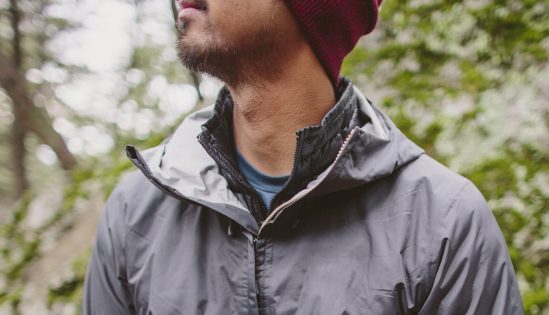Layering Clothes Effectively To Stay Warm Outside In Winter
by Sara Tipton, Ready Nutrition:

Layering your clothing is one of the best ways to stay warm. Anyone who works outside or has chores around the house to take care of in the winter months understands the importance of keeping the body warm so it can operate at optimal levels.
Layering your clothing comes with many benefits, including the ability to remove one or two items of clothing if you begin to feel a bit warm and overdressed. This makes you more prepared for any possible weather outcome, writes Mountain Warehouse. When you’re doing a combination of activities such as standing, walking, sitting, going outside and inside and back outside again, your body regulates its temperature very differently. This is ideal for people who do a lot of their chores outdoors! Layering allows you to be comfortable throughout the day as your body temperature and activity level change.
But just how does this technique work to keep a person warm? Layering clothing works by trapping warm air created by your own body heat in between the many layers of clothing. That trapped warm air acts like a layer of insulation for your body. Especially in winter, because that’s when it’s much colder, keeping your core warm is a key to good health, because this is the area that generates heat for your vital organs. Those organs need your body heat to function properly.
The University of Health Services in Madison Wisconsin writes that the basics of layering include four layers.
- Base: a thin layer that fits your body. It works to wick away any sweat and moisture that would otherwise suck up your body heat.
- Mid: your normal outfit, whether that’s a long sleeved shirt or sweater.
- Insulation: keeps your body heat in, and serves as your main source of warmth, like a fleece jacket or down vest. Some parkas even come with a built-in insulation layer.
- Shell: protects you from the elements, like wind, snow, or rain. It’s the last layer of protection between you and Mother Nature.
Some types of materials are more suited for the layering task than others. Try to avoid cotton. It doesn’t insulate well, and when wet causes rapid loss of body heat. And if it’s raining or snowing, don’t put on a down vest or jacket. Once it gets wet, you’ll be very cold.
Let’s start with the “Base layer”. Your base should be able to wick moisture, such as sweat, away. If you are wet, you’ll be cold. A great item for this base piece, I personally have found works wonders, is Under Armor Cold Gear with thumbholes. Click here for a women’s style, and click here for a men’s style. The thumbholes prevent the base layer’s sleeves (which are pretty form-fitting to provide effective moisture wicking) from inching upward throughout activities such as sports or chores where there is a lot of arm movement. The thumb holes are not necessary for everyone, however, I refuse to buy a base layer without them anymore. This layer is going to cost you a little bit, but consider it an investment. Your first and fourth layer will be more expensive to buy, but both will be worth the money. Another perk of buying the Under Armour brand of Cold Gear as your base layer is that their materials are soft, comfortable, and don’t chafe. There are no odd seams in places that could get irritating.
Read More @ ReadyNutrition.com
Loading...



